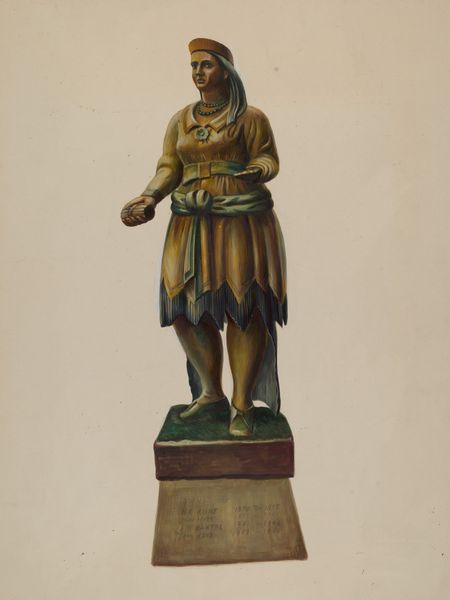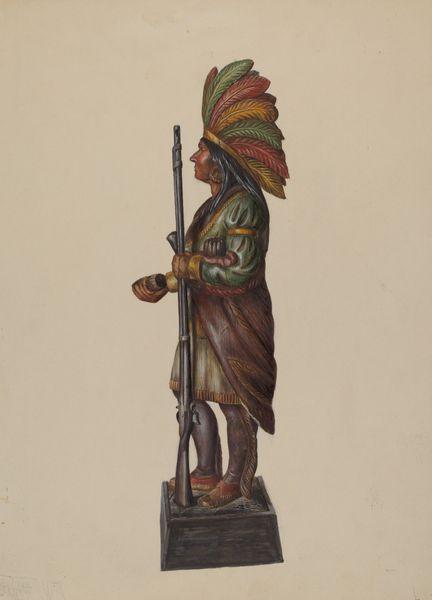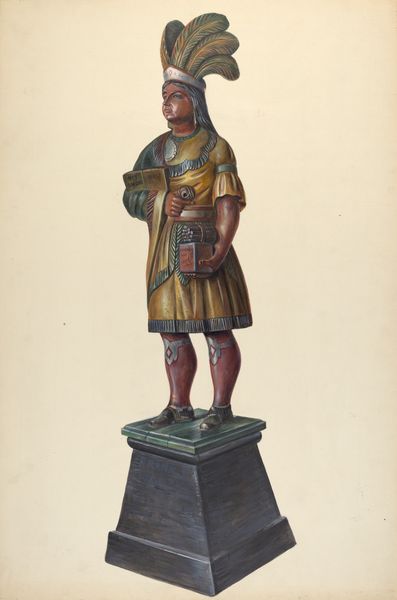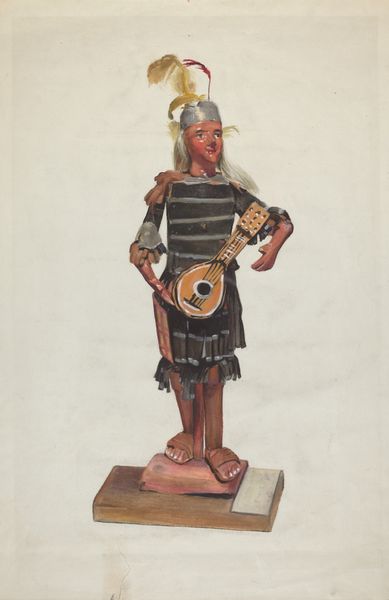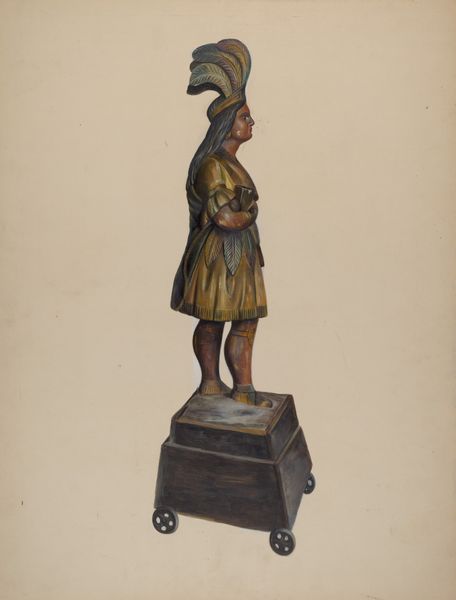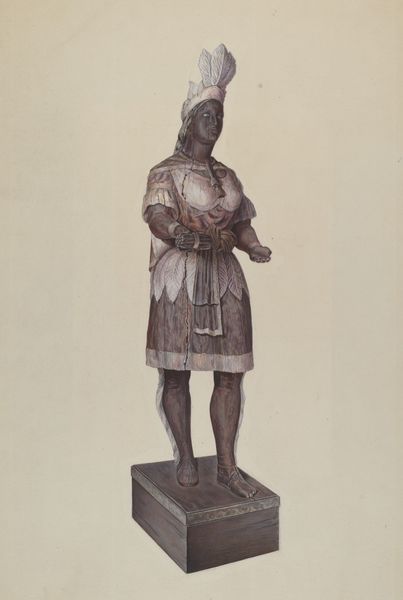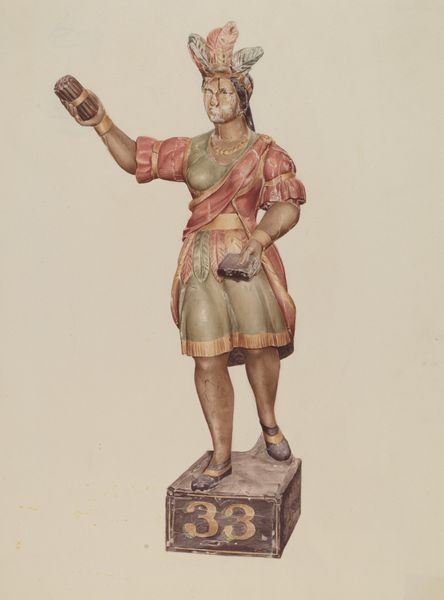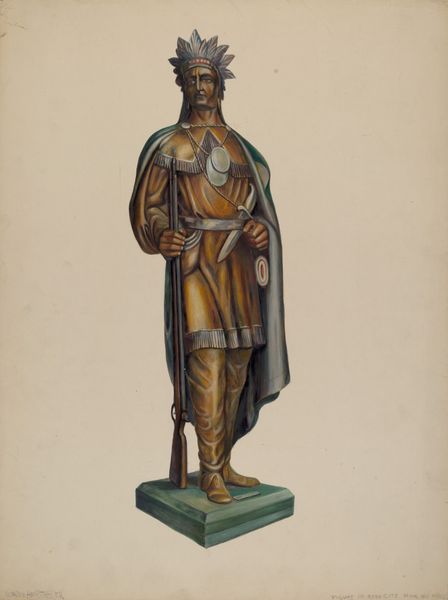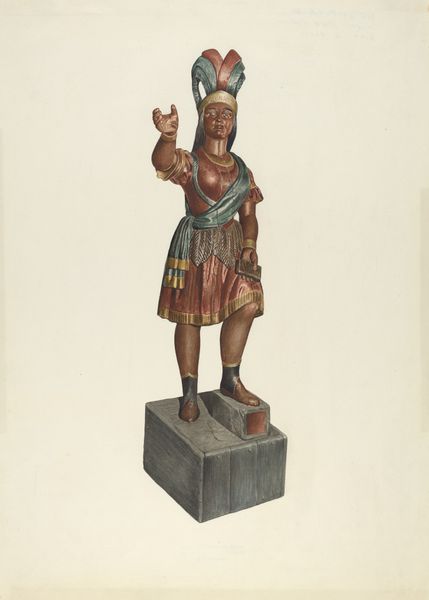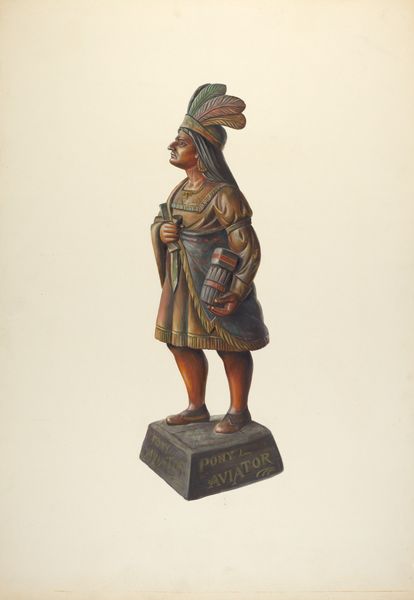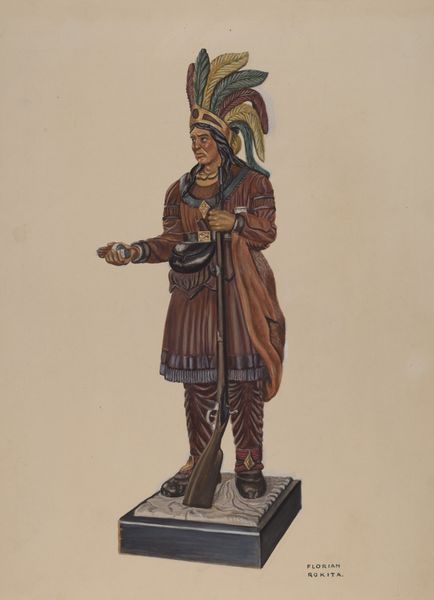
painting
#
painting
#
figuration
#
watercolour illustration
Dimensions: overall: 52.3 x 32.6 cm (20 9/16 x 12 13/16 in.)
Copyright: National Gallery of Art: CC0 1.0
Editor: So, this is Chris Makrenos’s "Cigar Store Indian," made around 1941, it's a watercolor. It almost looks like a study for a sculpture. What can you tell me about this work? Curator: I see a layered exploration of representation and commercial exchange. This watercolour captures a mass-produced object - the cigar store Indian. Consider the irony: watercolour, typically used for landscapes or portraits of the wealthy, employed here to depict a commercial sign that, itself, is a commodification of indigenous identity. What does it mean to represent an object already imbued with layers of meaning, specifically within a capitalist structure? Editor: That's interesting, the layers of representation. I hadn't thought about that. How does the medium, watercolor, play into the interpretation? Curator: Watercolor, a relatively inexpensive and easily transportable medium, speaks to accessibility and mass production. It’s interesting that it mimics carved wood but can't achieve its textures and materiality. Think about the context: 1941, during wartime. Resources are scarce, and artists might turn to cheaper, more readily available materials. Is this artwork highlighting the difference between mass-produced imagery versus individual craftsmanship? How is it indicative of the cultural and economic pressures of the time? Editor: So, it’s not just the image of the Indian, but also the way it's depicted – the material and process behind the work– that makes it a commentary on commerce and culture. Curator: Exactly! We are looking at a cultural object transformed, through the labor and materials of painting. How does the artistic process change the symbolic weight of this cigar store figure, rooted in cultural appropriation? Editor: I’ll never look at a watercolor the same way. Curator: Hopefully, it encourages you to consider what informs all works of art: the resources needed, and the conscious and unconscious choices behind using these.
Comments
No comments
Be the first to comment and join the conversation on the ultimate creative platform.
